North Texas Fall Foliage: Why Leaves Change Color

North Texas weather changes as quickly as the mood of a toddler. Oscillating from hot to cold. One thing that clearly denotes autumn in North Texas is the fall foliage. The color shift may not be as striking as what you’d see in upstate New York, but we do get some vibrant displays of red, orange, and yellow from a few species of trees. Learn why leaves change color and which trees to keep an eye out for.
Autumn Blaze Maple
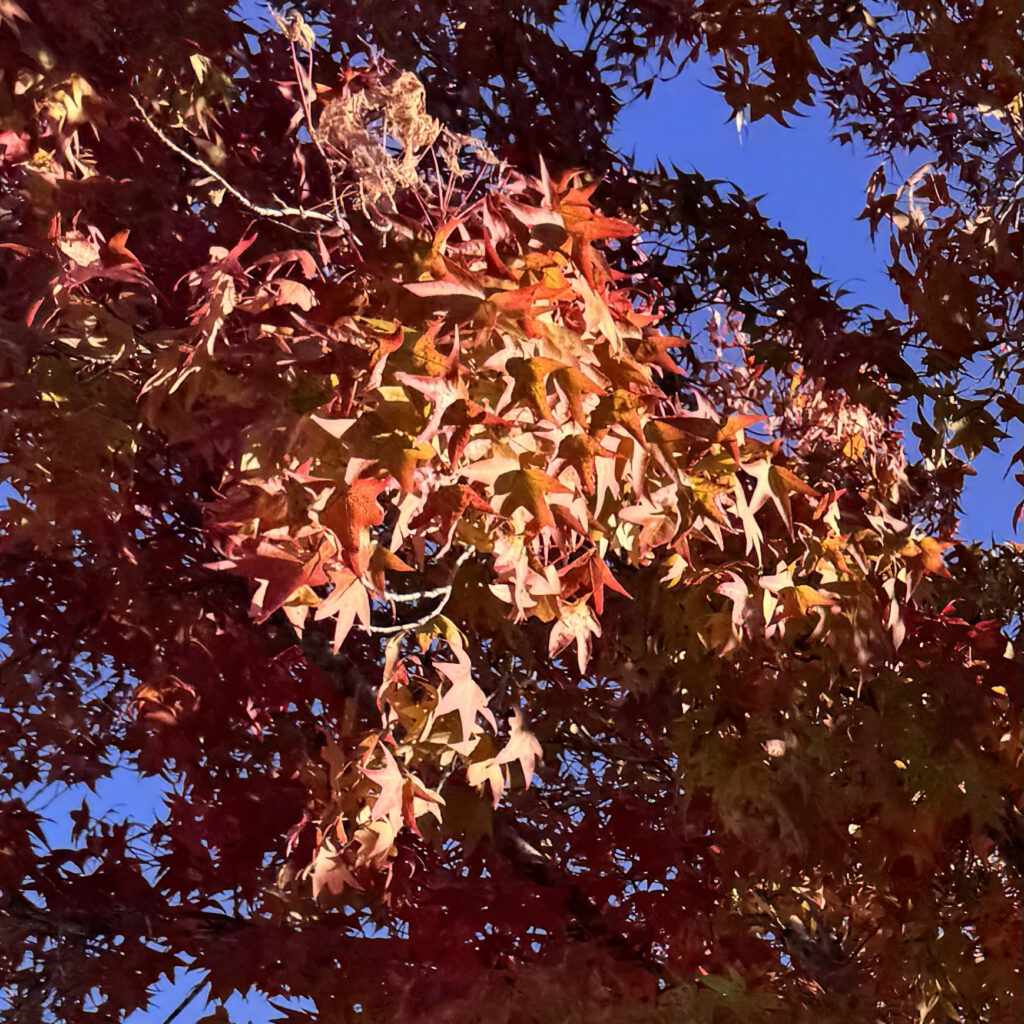
Known for their vibrant red foliage, their adaptability to the North Texas climate makes them an ideal choice for those seeking low-maintenance beauty. In addition to their stunning appearance, once established are moderately drought-tolerant. This hardiness ensures they stand the test of time even in the hotter months.
These fast growers provide ample shade in the summer, reducing cooling costs for nearby homes. As a bonus, these trees support local wildlife, offering both food and shelter to birds and small mammals.
Roughleaf Dogwood
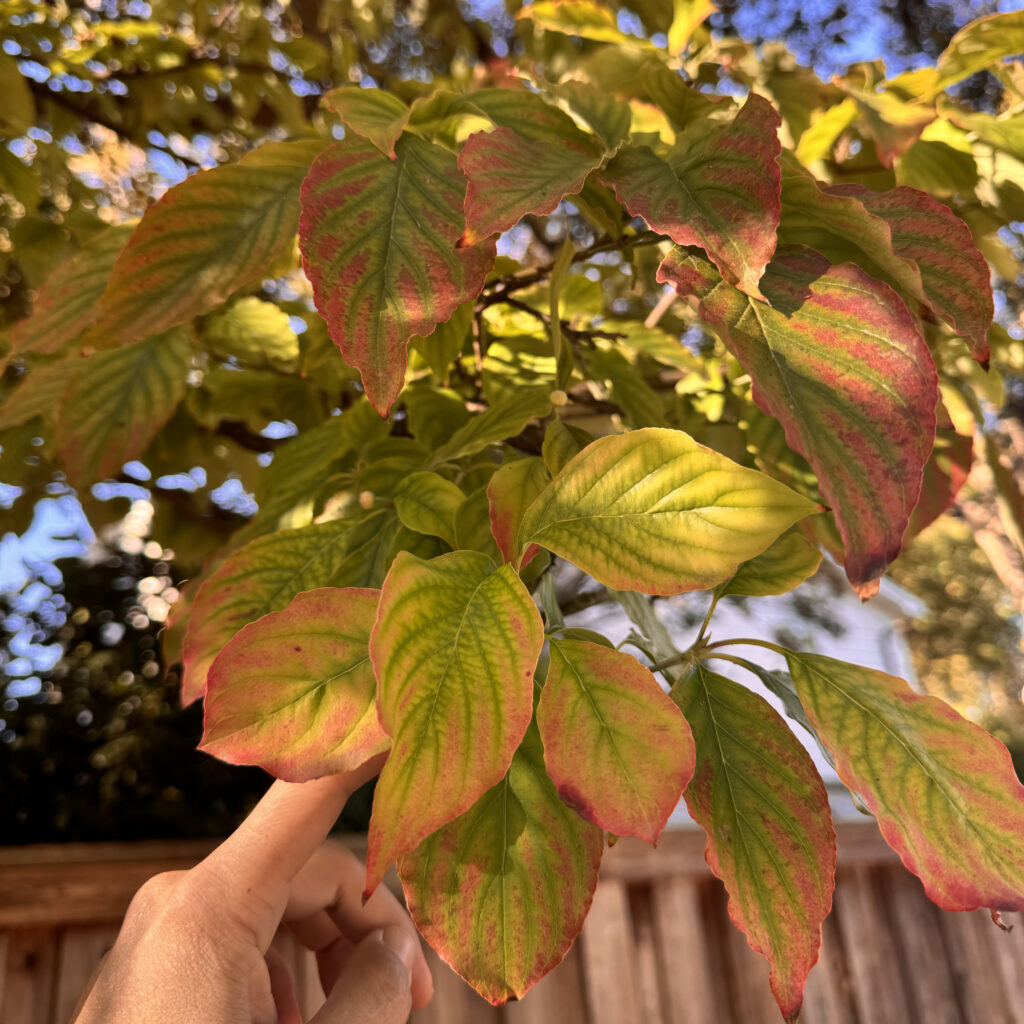
Dogwoods provide striking red and purple colors during fall, creating a gentle yet breathtaking visual. These trees are perfect for smaller gardens, bringing elegance and charm. Their small stature allows them to fit comfortably beneath taller trees, adding layers to your landscape.
In spring, Dogwoods produce beautiful blooms that complement their fall foliage, offering year-round interest. As understory trees, they prefer semi-shaded areas, mimicking their natural habitat in deciduous forests. Their versatility allows them to adapt to various garden styles with ease.
Mexican Plum
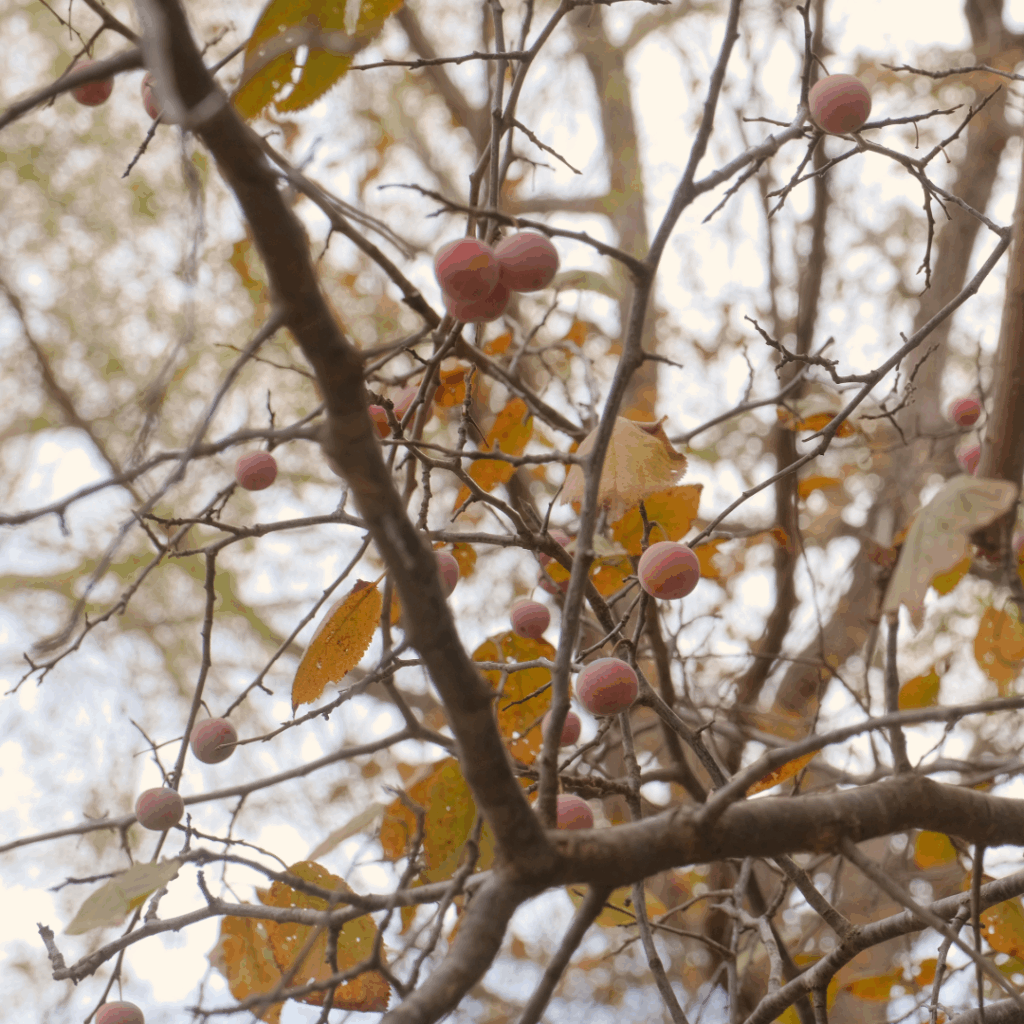
While the Mexican plum is a showstopper in the spring with their large fragrant white blooms; their leaves also provide a beautiful orange color in the fall.
If you are looking for a tree to replace your aging bradford pear we highly recommend a Mexican Plum. They are beautiful and unlike a bradford pear are not prone to breaking.
Lacebark Elm & Cedar Elm
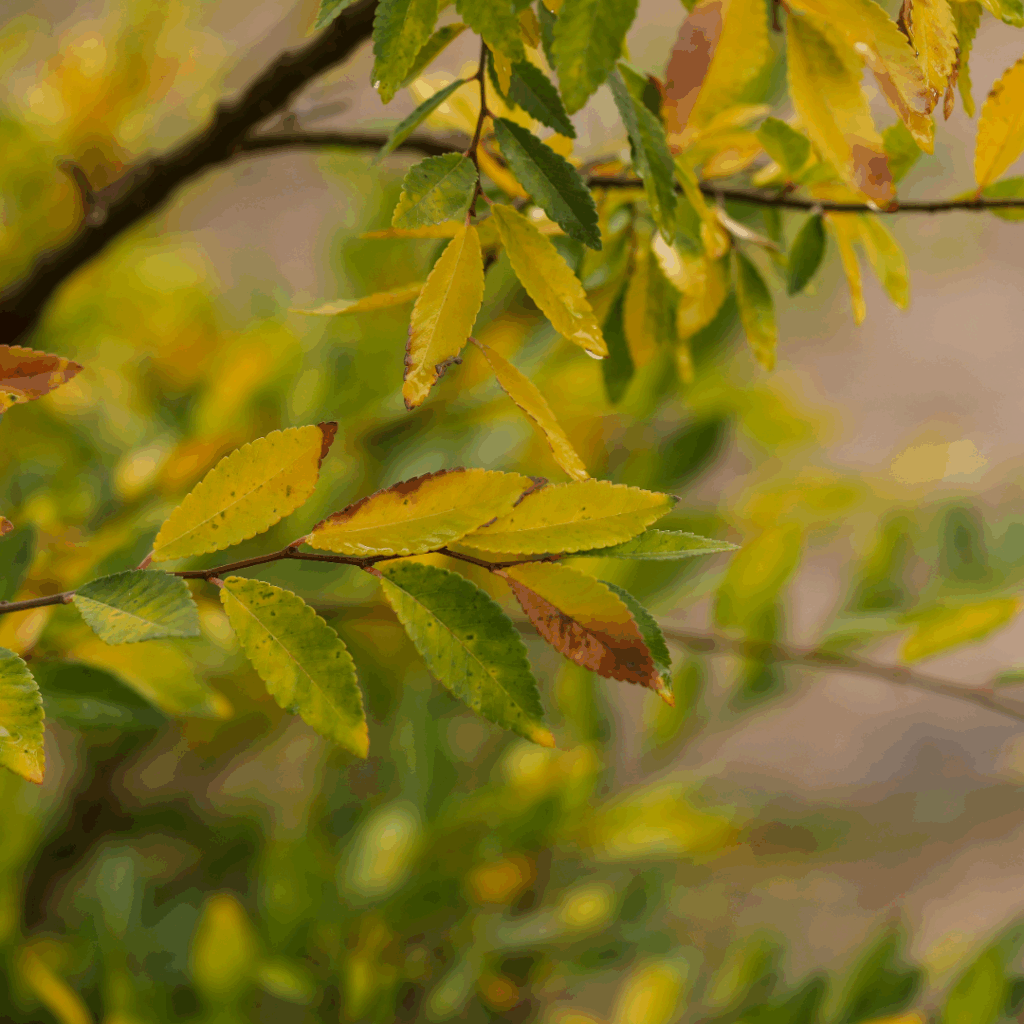
Elms transform into a golden display during autumn. Their graceful arching branches add a classic touch to landscapes, withstanding the test of time and elements. The rich hue of their fall leaves creates a spectacular backdrop against the deep blue Texas sky.
Historically valued for their strong, flexible wood, Elms have also proven themselves to be quite durable in urban environments. Their extensive root systems help anchor soil and prevent erosion, offering not just beauty but environmental benefits too. Ideal for city parks and spacious residential yards, Elms are a timeless choice.
Prairie Flameleaf Sumac
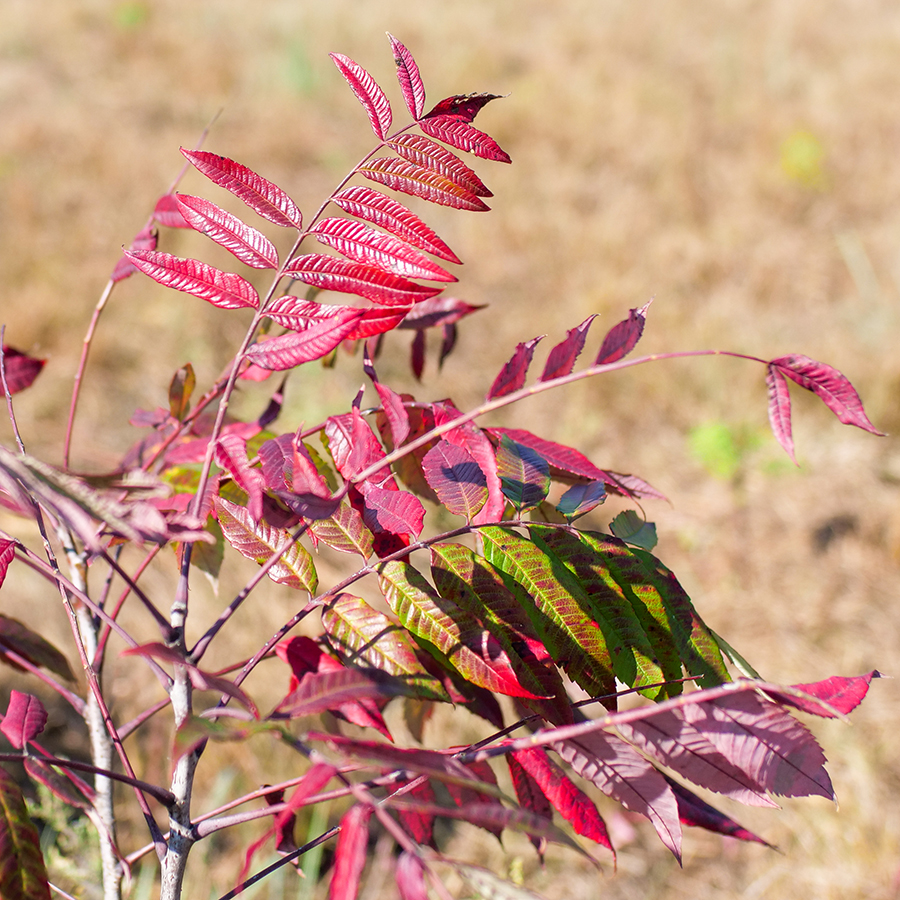
Extremely drought tolerant this tree is true to its name come fall. The leaves look like flames with bright red and orange hues.
Prairie Flameleaf Sumac is a fast-growing Texas native tree, usually 20–30 feet tall, valued for its brilliant red-orange fall foliage and clusters of bright red fruit that follow summer’s white blossoms. Adapted to limestone soils and tolerant of heat, cold, and drought, it’s generally pest- and disease-free. While it may produce some suckers, it spreads less aggressively than other sumacs.
Bur Oak, Chinquapin Oak, Monterrey Oak, Shumard Red Oak, Pin Oak
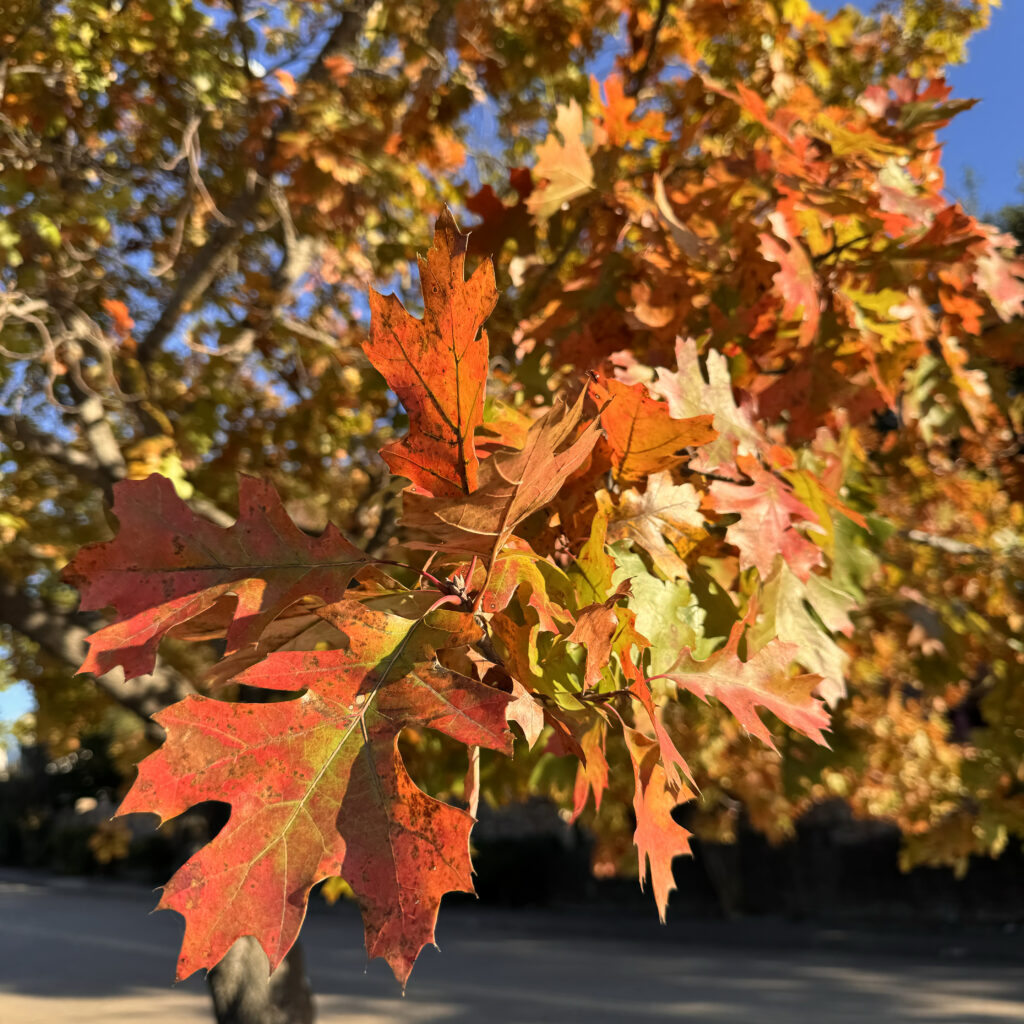
Oaks turn a rich maroon and bronze during the fall months. Their sturdy presence and impressive canopy make them a classic addition to any landscape. The multiple varieties of Oaks ensure there’s one perfect for every garden’s microclimate.
These majestic trees are more than just visually appealing. Oaks serve as keystone species within ecosystems, fostering biodiversity by providing food and habitat for various animals and insects. Acorns produced by Oaks are a staple in the diets of many woodland creatures, including deer, squirrels, and even some birds.
Chinese Pistache
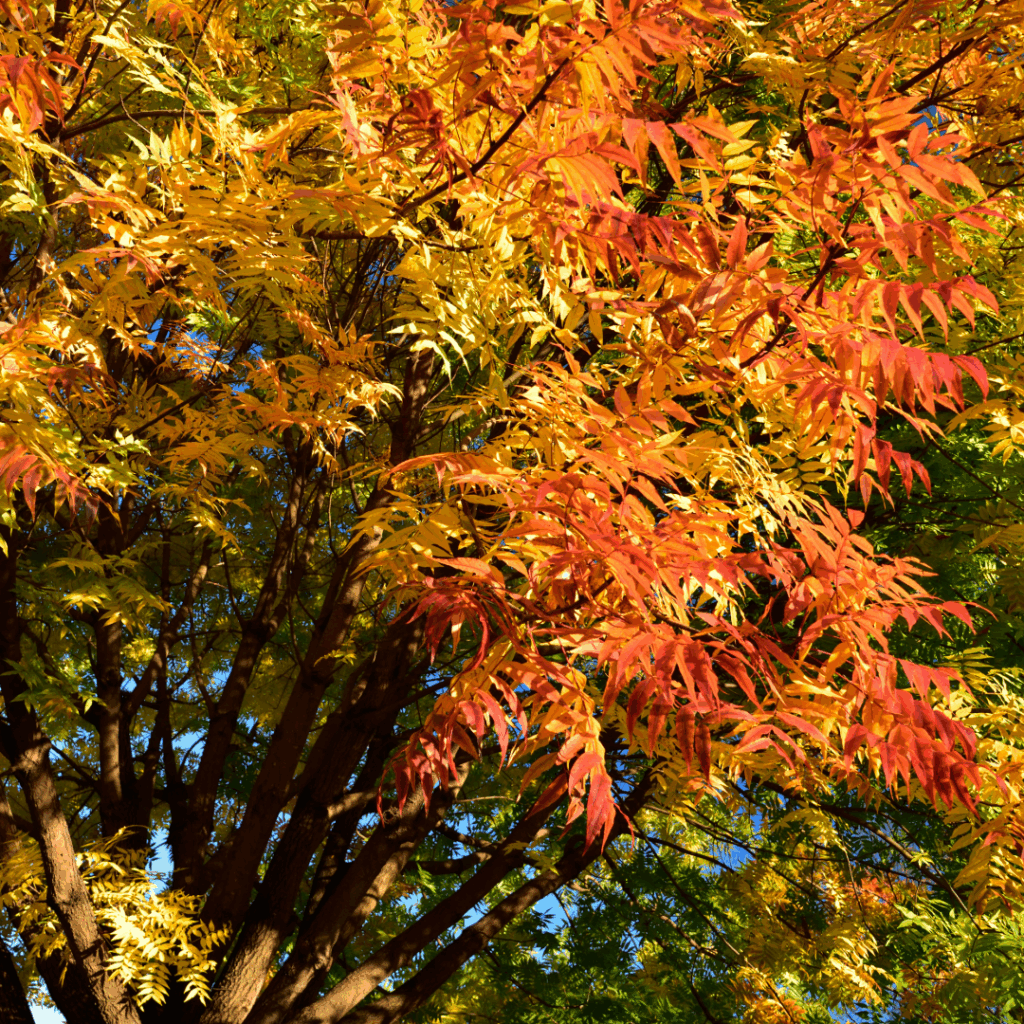
With its brilliant red and orange leaves, the Chinese Pistache is often called a ‘miniature maple’. It’s a resilient option that thrives in the Texas heat. Not only do these trees tolerate heat, but they also survive drought conditions, making them a smart choice for various landscapes.
An interesting fact about Chinese Pistache is its fruit, which, while not edible for humans, provides a valuable food source for birds and other wildlife during the fall. This makes the tree an attractive option for those wishing to support local biodiversity.
The Science Behind the Colors: Chlorophyll and Beyond
During the spring and summer, the green pigment chlorophyll dominates the leaves, aiding in photosynthesis. As autumn approaches, chlorophyll breaks down, revealing other pigments that create the kaleidoscope of fall colors.
Chlorophyll is crucial for photosynthesis, allowing trees to convert sunlight into energy. This is why we do not recommend over-trimming trees and strictly follow The American National Standards Institute (ANSI) guidelines for tree pruning and trimming for the best interest of your trees. Leaves are vital to tree health.
As fall rolls around, trees begin to prepare for the colder months ahead by breaking down chlorophyll in their leaves and absorbing nutrients back into their branches and trunks. This breakdown process reduces the dominance of green pigments in leaves, setting the stage for the appearance of pigments, which have been present but hidden throughout the summer months.

Unveiling Hidden Hues: Carotenoids and Anthocyanins
Carotenoids are responsible for the yellow and orange shades, while anthocyanins contribute to the reds and purples. These pigments are always present in leaves but become visible when chlorophyll fades.
Carotenoids are particularly stable and are resistant to sunlight and rain, which is why you’ll often see colors like yellow and orange maintained for longer periods in the fall. Anthocyanins, on the other hand, are produced anew each year in response to the light and sugar buildup in leaves, showcasing vivid reds in species like the autumn blaze maple. These dynamic interactions between pigments highlight the complex, yet beautiful, processes happening within the trees as seasons change.
The Role of Weather: How Temperature and Light Influence Color
Temperature and sunlight play a crucial role in determining the intensity of fall colors. Warm, sunny days followed by cool nights enhance the production of anthocyanins, leading to more vivid reds and purples.
Too much rain can dull the colors, while an early frost can end the stunning display altogether. Ideally, a season with plenty of sunshine and occasional rain can produce the most spectacular visuals. The balance between moisture and dryness is key in creating striking reds in trees like the Chinese pistache.
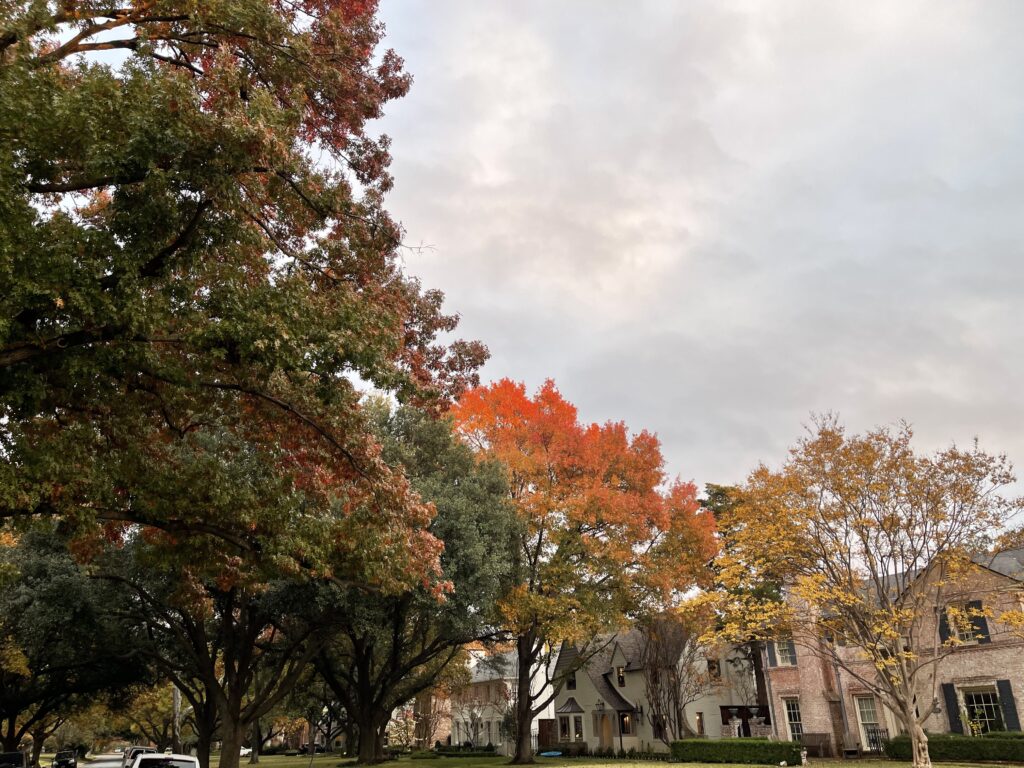
Why Leaves Change Color: A Tree’s Preparation for Winter
As trees prepare for the cold months, they conserve energy by halting photosynthesis. This process involves breaking down chlorophyll and sealing off leaves, which eventually fall to the ground as nutrients for the soil.
After absorbing valuable nutrients from their leaves, trees form a layer of cells at the base of leaf stems called the ‘abscission layer’. This structure creates a seal between the leaf and the branch, naturally severing the connection and allowing the leaf to fall gracefully to the ground. This not only ensures the tree retains essential nutrients but also provides the soil with organic matter that enriches the surrounding environment for future growth.

At Texas Tree Surgeons we love trees. Every fall, we are reminded of nature’s incredible ability to transform and renew. If you would like to add some vibrant fall colors to your home contact us for tree planting. Not only will you be adding to our collective urban forest but also an opportunity to appreciate the cycles of life and the intricate science that drives these transformations.
Related Blogs
Similar blogs related to this topic

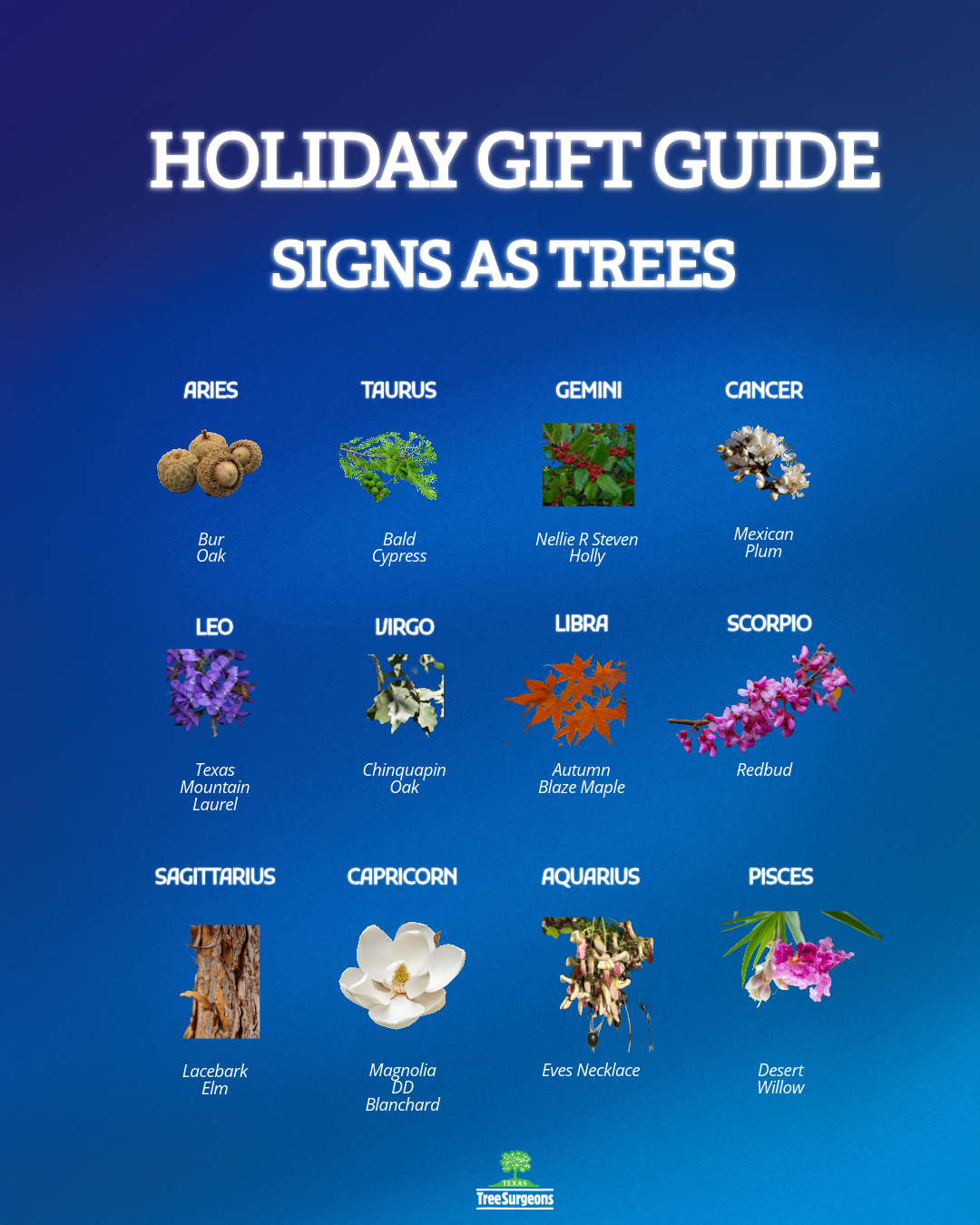
Holiday Gift Guide, Zodiac Signs as Trees
This holiday season a gift that keeps on giving in a time of over consumption is the most ethical and thoughtful gift. It is investment in a shared future that benefits their home and the…
Read more

Which Tree Should You Plant?
Tree selection needs to include a balance of preference in style with species selection that can thrive in North Texas unique soil conditions and climate. Below are some essential questions to ask yourself to ensure…
Read more
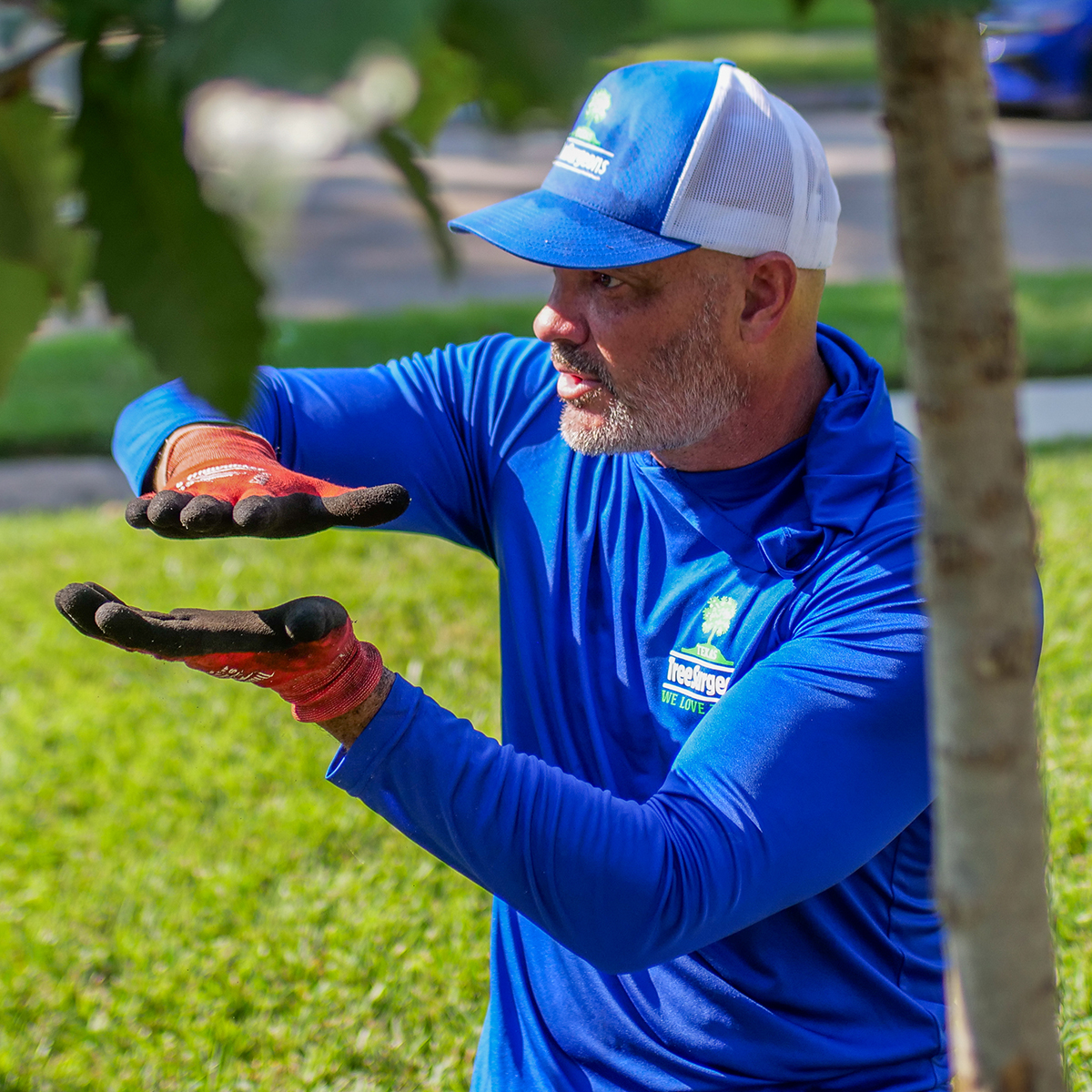
Guide to Choosing Native Tree Species for North Texas
Choosing the right tree species for your garden can be a daunting task, especially in the unique climate of North Texas. Selecting native species can ensure your trees thrive in the local environment while supporting…
Read more